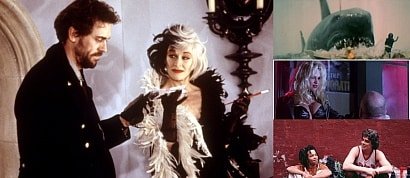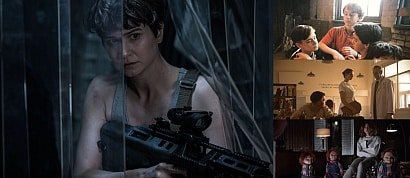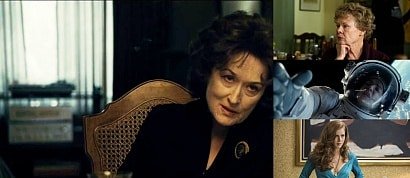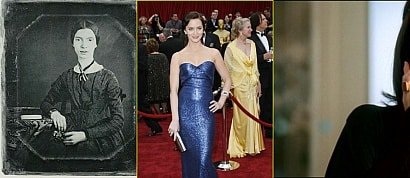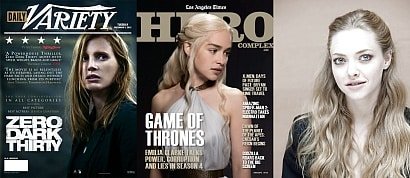True Blue Femininity
Sort by:
Showing 31 items
Decade:
Rating:
List Type:
Ami Mizuno/Sailor Mercury from Sailor Moon primarily wears blue and is the most shy of the Inner Senshi, while Haruka Tenou/Sailor Uranus wears navy and gold. The very feminine Michiru/Sailor Neptune wears dark blue and teal.






Merlin (2008)
Guinevere has a number of pastel dresses, but in series four especially, she was frequently seen in pale blue


 Add items to section
Add items to section
Disney
Peter Pan (1953)
In an inversion of Pink Girl, Blue Boy, Wendy Moira Angelina Darling is portrayed as wearing a long, blue nightgown with a blue hair ribbon, while her youngest brother Michael is portrayed as wearing pink footie pajamas.




ccc25's rating:


Tiana gets a fancy blue dress. On a side note, since it took place in The Roaring Twenties, that color would have been seen as more feminine than Charlotte's wardrobe.
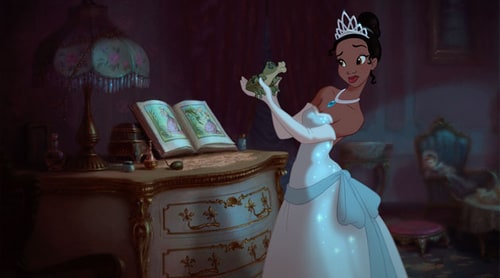

Aladdin (1992)
ccc25's rating:


Sleeping Beauty (1959)
Sleeping Beauty played with this by making fairies have a color war over making Aurora's dress blue or pink. It stays blue for most of the movie.


Cinderella (1950)
Cinderella's dress is blue mainly in stuff outside the movie. The dress was meant to be silver (although the glass slippers were blue tinted), but coloring issues made appear blue. Her nightgown was definitely blue.




ccc25's rating:


From tvtropes.org
Blue is a common color to represent femininity. Thus a girl or woman wearing blue is a sign that she is fair and gentle (to certain limits).
This could have started at least as far back as ancient Greece and Rome, and even why the Virgin Mary is often depicted in a blue robe. The logic was that blue symbolizes peace, serenity, kindness, and other such aspects that were considered womanly virtues. And from the early to mid 20th century, some argued that blue should be the color for girls, and red should be the color for boys. And even though we ended up with Pink Girl, Blue Boy after World War II, putting a woman in blue is still considered a sign of her femininity, if not as obvious as colors like pink and purple.
This can apply to any feminine woman at any age, some more than others, like a Winter Royal Lady.
Now blue can have other meanings, such as sadness and loneliness. Those can overlap with this trope (as in representing both femininity and sadness).
Blue is a common color to represent femininity. Thus a girl or woman wearing blue is a sign that she is fair and gentle (to certain limits).
This could have started at least as far back as ancient Greece and Rome, and even why the Virgin Mary is often depicted in a blue robe. The logic was that blue symbolizes peace, serenity, kindness, and other such aspects that were considered womanly virtues. And from the early to mid 20th century, some argued that blue should be the color for girls, and red should be the color for boys. And even though we ended up with Pink Girl, Blue Boy after World War II, putting a woman in blue is still considered a sign of her femininity, if not as obvious as colors like pink and purple.
This can apply to any feminine woman at any age, some more than others, like a Winter Royal Lady.
Now blue can have other meanings, such as sadness and loneliness. Those can overlap with this trope (as in representing both femininity and sadness).
Added to
People who voted for this also voted for
My Favorite Lists
Drako's Movies 2015
Depressing--Losing hope in humanity
My Welsh Art Lists
The Movies of 1996
ICONIC IMAGES OF MUSIC LEGENDS — THE BLUES
35 From 3: My Favorite Films From 2003
Movie Journal 2017
Favorite Sci-Fi/Fantasy Films: 2016-2017
Favourite Lists: Originality
Top Favorites Movies Seen in 2017
Favorite Sci-Fi/Fantasy Films: 1984-1985
Best Films of 1959
Top 10 of 10: 1997
Favorite Horror Films: 2017
More lists from ccc25
And the Oscar goes to... (Acting - 1990-2014)
100 sexiest Movies Stars
Ezra Miller's Face
10 of the Best... Emily
Movie Posters Evolution
Noomi Rapace's Face
Victoria's Secret - What Is Sexy? 2013
 Login
Login

 273
273
 4.6
4.6
 4.4
4.4






































































